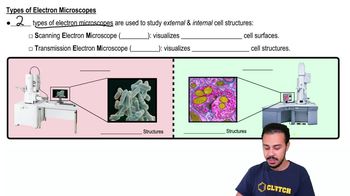Describe the three components of the neuromuscular junction.
 Erin C. Amerman 2nd Edition
Erin C. Amerman 2nd Edition Ch. 11 Introduction to the Nervous System and Nervous Tissue
Ch. 11 Introduction to the Nervous System and Nervous Tissue Problem 11.1a
Problem 11.1aThe drug neostigmine blocks the actions of acetylcholinesterase in the synaptic cleft. What effect would this have on synaptic transmission? What effects might you expect to see as a result of this drug?
 Verified step by step guidance
Verified step by step guidance
Verified video answer for a similar problem:
Key Concepts
Acetylcholinesterase Function

Synaptic Transmission

Effects of Neostigmine

The trigger for exocytosis of synaptic vesicles from the presynaptic neuron is:
a. arrival of an action potential at the axon terminal and influx of calcium ions.
b. summation of IPSPs at the presynaptic neuron.
c. binding of neurotransmitters to the axon hillock.
d. influx of Na+ into the postsynaptic neuron.
A drug that blocks Na+ channels in neurons does so not only in the axon but also in the dendrites and cell body. What overall effect would this have on action potential generation?
Which of the following is not a method by which the effects of neurotransmitters are terminated?
a. Reuptake into the presynaptic neuron
b. Diffusion away from the synaptic cleft and uptake by glial cells
c. Movement back to the cell body by retrograde axonal transport
d. Degradation by enzymes in the synaptic cleft
A ________ is characterized by multiple input neurons synapsing on one postsynaptic neuron.
a. diverging circuit
b. discharge zone
c. facilitation zone
d. converging circuit
Mark the following statements as true or false. If a statement is false, correct it to make a true statement.
c. The Na+/K+ pumps and gated channels maintain the Na+ and K+ gradients necessary for action potentials to occur.